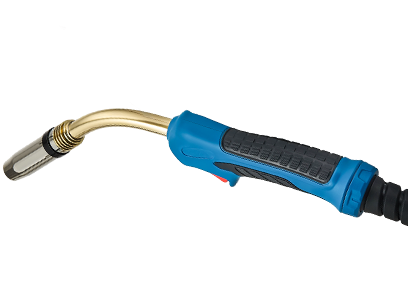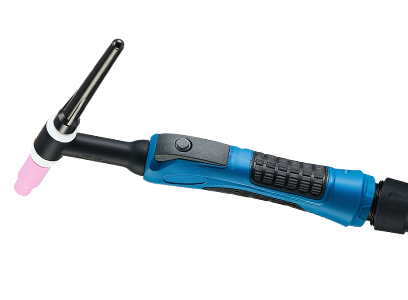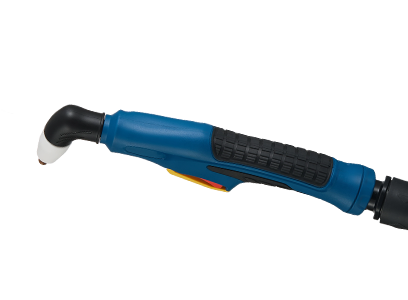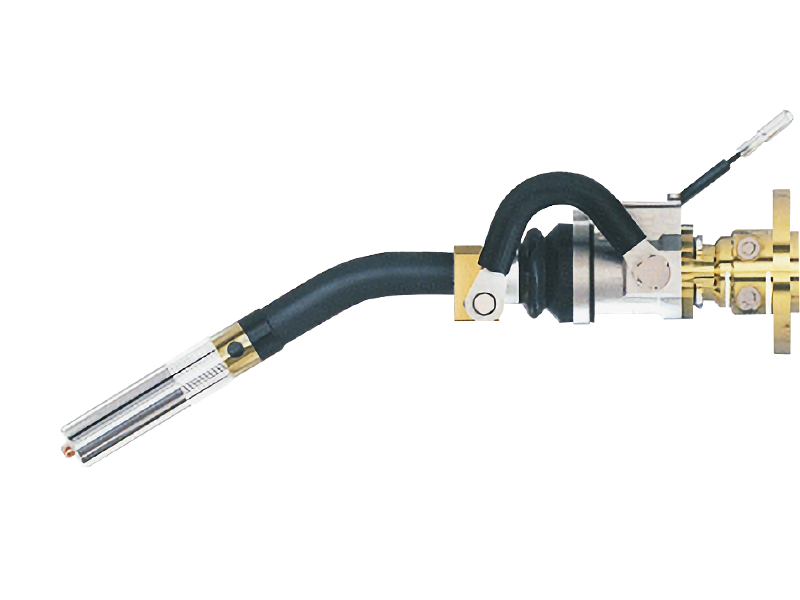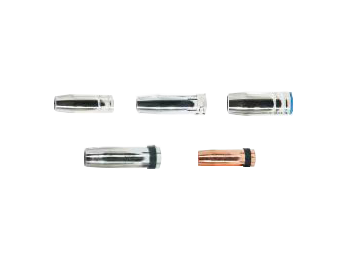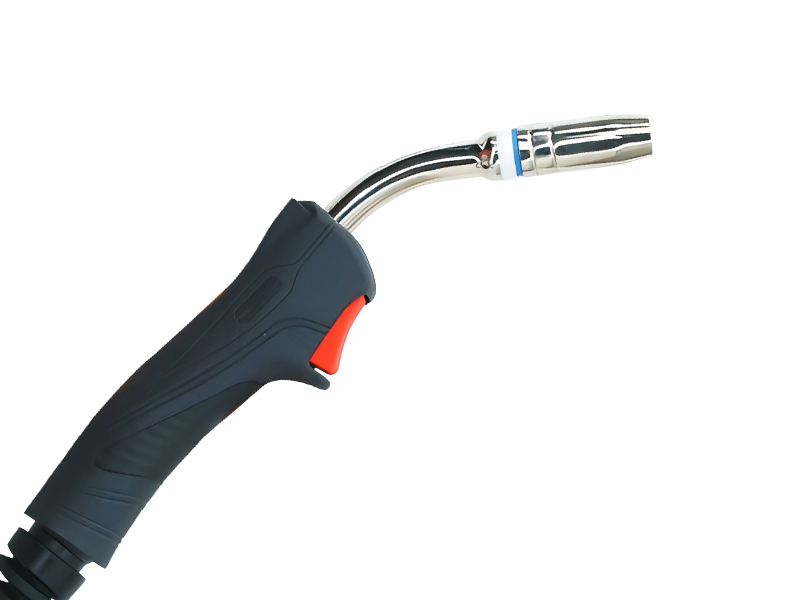The Evolution of MIG Welding Torches: A Historical Overview
The Evolution of MIG Welding Torches: A Historical Overview
MIG (Metal Inert Gas) welding, also known as Gas Metal Arc Welding (GMAW), has transformed the welding industry since its introduction in the mid-20th century. At the heart of this process lies the MIG welding torch, an essential tool that has undergone significant evolution over the years. This article delves into the historical progress
The Evolution of MIG Welding Torches: A Historical Overview
MIG (Metal Inert Gas) welding, also known as Gas Metal Arc Welding (GMAW), has transformed the welding industry since its introduction in the mid-20th century. At the heart of this process lies the MIG welding torch, an essential tool that has undergone significant evolution over the years. This article delves into the historical progression of MIG welding torches, exploring their technological advancements, design improvements, and their impact on the welding industry.
Table of Contents
1. Introduction to MIG Welding Torches
2. A Brief History of Welding Technology
3. Early MIG Welding Torches: The Pioneering Years
4. The Evolution of Design in MIG Welding Torches
5. Technological Advancements in MIG Welding
6. Modern MIG Welding Torches: Features and Innovations
7. Applications of MIG Welding: Industries and Use Cases
8. The Future of MIG Welding Torches: Trends and Predictions
9. Frequently Asked Questions about MIG Welding Torches
10. Conclusion
Introduction to MIG Welding Torches
MIG welding torches are specialized tools designed to consistently deliver a steady stream of filler metal while creating an arc between the workpiece and the electrode. These torches have become integral in various industries, including automotive, aerospace, and construction, due to their versatility and efficiency. Understanding the evolution of MIG welding torches not only highlights their importance but also sheds light on the innovations that continue to shape welding practices today.
A Brief History of Welding Technology
Welding has a rich history that dates back thousands of years, with early techniques involving the forging of metal pieces together. The formalization of welding as we know it began in the 19th century with the introduction of arc welding. However, it wasn't until the 1940s that MIG welding was developed. The need for a quicker and more efficient method of joining metals during World War II catalyzed advancements in welding technology, laying the groundwork for modern MIG welding torches.
Early MIG Welding Torches: The Pioneering Years
The first MIG welding torches emerged in the late 1940s and early 1950s. These early models were simple in design, primarily consisting of a power source, gas supply, and a basic torch. They were characterized by a limited range of settings and a less sophisticated method of feeding the filler metal. Nonetheless, they represented a significant innovation in welding technology, providing a faster and more efficient alternative to traditional welding methods.
One notable early MIG torch was the "Innershield" torch, which utilized a self-shielding process, eliminating the need for external gas supplies. This design paved the way for further innovations and improvements, setting the stage for the advancements that would follow.
The Evolution of Design in MIG Welding Torches
As the demand for MIG welding grew, so did the need for more advanced torch designs. Manufacturers began to focus on ergonomics, making the torches lighter and easier to handle. Key design features included:
- **Improved Grip**: Early torches were often cumbersome, prompting manufacturers to develop ergonomic grips that reduce operator fatigue.
- **Adjustable Settings**: The introduction of adjustable flow rates and voltage settings allowed welders to customize their welding experience according to the specific requirements of each project.
- **Interchangeable Parts**: The evolution of interchangeable tips and nozzles made it easier for welders to adapt their equipment to different welding scenarios.
These design improvements not only enhanced the user experience but also contributed to overall welding quality and safety.
Technological Advancements in MIG Welding
The evolution of MIG welding torches has been closely tied to advancements in technology. Key developments have included:
- **Automatic Wire Feeders**: The introduction of automatic wire feeders in the 1970s revolutionized the MIG welding process, allowing for a more consistent and controlled feed of filler metal.
- **Digital Controls**: The incorporation of digital technology into MIG welding torches has enabled precise control over welding parameters, enhancing overall welding quality.
- **Multi-Purpose Torches**: Modern MIG welding torches now often come equipped with the capability to handle multiple welding processes, including TIG (Tungsten Inert Gas) welding and stick welding, further increasing their versatility.
These technological advancements have not only improved the efficiency of MIG welding but have also enhanced safety features, making the process more accessible to a wider range of operators.
Modern MIG Welding Torches: Features and Innovations
Today’s MIG welding torches are equipped with numerous features designed to improve performance and safety. Some of the most notable innovations include:
- **Gas Flow Management**: Advanced gas flow management systems ensure optimal shielding gas coverage, reducing the risk of defects in the weld.
- **Cooling Systems**: Many modern torches incorporate cooling mechanisms to prevent overheating, which can lead to equipment failure and compromised weld quality.
- **User-Friendly Interfaces**: Digital displays and user-friendly interfaces allow operators to easily adjust settings and monitor performance in real-time.
These features ensure that welders can achieve high-quality results with greater ease and efficiency.
Applications of MIG Welding: Industries and Use Cases
MIG welding is widely utilized across various industries due to its adaptability and speed. Common applications include:
- **Automotive Manufacturing**: MIG welding is often employed in the production of vehicles, where speed and precision are crucial.
- **Construction**: The construction industry relies on MIG welding for structural steel fabrication and assembly.
- **Aerospace Engineering**: In the aerospace sector, MIG welding is used to join lightweight materials, contributing to the development of efficient aircraft.
The versatility and effectiveness of MIG welding ensure its continued relevance across these and other industries.
The Future of MIG Welding Torches: Trends and Predictions
Looking ahead, several trends are expected to shape the future of MIG welding torches:
- **Increased Automation**: As industries continue to embrace automation, we can expect to see more robotic welding systems that utilize advanced MIG welding torches for precision and efficiency.
- **Sustainable Practices**: With a growing emphasis on sustainability, the development of eco-friendly welding processes and materials will likely influence future torch designs.
- **Enhanced Connectivity**: The integration of smart technology into MIG welding torches will allow for better data collection and analysis, improving overall operational efficiency.
These trends indicate a promising future for MIG welding technology, driven by innovation and a commitment to quality and sustainability.
Frequently Asked Questions about MIG Welding Torches
1. What is the main function of a MIG welding torch?
The primary function of a MIG welding torch is to deliver a continuous feed of filler metal while creating an electric arc between the workpiece and the electrode, allowing for seamless welding.
2. How do MIG welding torches differ from TIG welding torches?
MIG welding torches use a continuously fed wire electrode, while TIG welding torches utilize a non-consumable tungsten electrode, requiring a separate filler rod for welding.
3. What safety precautions should be taken when using a MIG welding torch?
Safety measures include wearing appropriate protective gear, ensuring proper ventilation, and regularly maintaining equipment to prevent malfunctions.
4. Can MIG welding torches be used on all types of metals?
MIG welding is suitable for a wide range of metals, including steel, stainless steel, and aluminum. However, the specific type of filler metal and gas used may vary depending on the material.
5. What advancements can we expect in MIG welding technology in the coming years?
Future advancements may include increased automation, enhanced connectivity with smart technology, and the development of eco-friendly materials and processes.
Conclusion
The evolution of MIG welding torches has been marked by significant historical milestones, technological advancements, and design improvements. As we have explored, these essential tools have transformed the welding industry, offering increased efficiency, safety, and versatility. The ongoing innovations in MIG welding technology promise an exciting future, ensuring that these torches will continue to play a vital role in various sectors. Understanding this evolution not only highlights the importance of MIG welding torches but also prepares us for the advancements yet to come.
TAG:
Related Posts
MIG Welding Robots vs. Traditional Methods: A Comprehensive Comparative Analysis
Table of Contents
1. Introduction to MIG Welding and Traditional Methods
2. Understanding MIG Welding Technology
3. Benefits of Using MIG Welding Robots
3.1 Efficiency and Speed
3.2 Precision and Quality
3.3 Enhanced Safety
4. Overview of Trad

